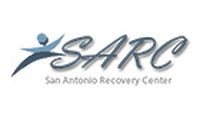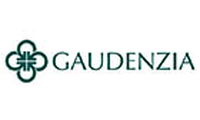12-Step Rehab

Addiction doesn’t just start, it’s years in the making. One might say they took many steps toward addiction long before it became their reality. Perhaps it began with socially smoking cigarettes or weed, maybe even alcohol. Soon, however, it blossomed into full addiction with harder substances, likely without the person even knowing it was coming. They tiptoed into a habit, where they found they needed their substance of choice to feel normalcy.
If it took steps to get them into addiction, it takes steps--12 steps to be exact--to get them out. Here’s what 12 steps to recovery looks like.
The 12-Step Philosophy
Originating with the famed organization, Alcoholics Anonymous (AA), in 1938, the 12 Step Program was pedaled into a method to help alcoholics recover and former alcoholics remain sober after founder Bill Wilson thoughtfully outlined his experience with alcoholism and road to recovery in the Big Book. He detailed his journey with Christianity along with the positive effects of sharing struggles and stories of alcoholism with others. This is why 12 Steps, at its core, is spiritually-based.
When it became the foundation for other recovery programs, 12 Steps flourished into a set of guiding principles that outlines a course of action addicts addicted to all substances or behavioral habits can take to recover.
As defined by Alcoholics Anonymous, the 12 steps involve:
-
Admitting you were powerless over addiction, that your life had become unmanageable.
-
Coming to believe that a “Power” greater than yourself could restore you to sanity
-
Making a decision to turn your will and life over to God
-
Searching and taking a fearless moral inventory of yourself
-
Admitting to God, yourself and another the exact nature of your wrongs
-
Being completely ready to have God remove all you character defects
-
Humbly asking Him to rid your shortcomings
-
Making a list of persons you’ve harmed and be willing to make amends with them
-
Making direct amends to these people, except in instances where the encounter could pose harm to either party.
-
Continuing to take personal inventory and when wrong, promptly admit it
-
Using prayer and meditation to improve your conscious contact with God, praying only for knowledge of His will for you and the power to carry that out.
-
Having a spiritual awakening as the result of these steps and carry the message to other addicts through speech and practicing these principles in all aspects of your life
Today, more than 200 self-help groups worldwide employ 12 Steps to millions of members, finding ways to fold it into their niche group. There is now Narcotics Anonymous, Cocaine Anonymous, Crystal Meth Anonymous, Marijuana Anonymous, Gamblers Anonymous, Overeaters Anonymous--and the list goes on.
But in order to serve this vast number, knowing that not all are religious, 12 Step programs, while heavy on spirituality, allow individuals to interpret the presence of God or a “Higher Power” based on their own beliefs.
12-Steps: More Than a Philosophy
Twelve Steps recognizes that addiction has to be treated physically, mentally and spiritually because they are all apart of the human condition, and addiction manifests in each dimension. Here's how the 12 Step philosophy aims to tackle addiction on all fronts:
Physical
Drugs and alcohol interrupt the brain’s communication system and chemical balance. Dopamine, a neurotransmitter, is found in segments of the brain that regulate movement, emotion, motivation and pleasure. While in active addiction, dopamine is activated, flooding the addict’s brain and providing a sense of euphoria. In an attempt to defend itself, the brain moves to decrease the amount of dopamine receptors it puts out, creating tolerance over time. It is why the individual must consume or use more to achieve the same effects.
In the same breath, though the brain tries to guard itself, it and the body’s overall chemistry becomes rewired. When an addict is suddenly deprived of their substance, physical and mental withdrawal kicks in, leading to any number of symptoms like:
- Convulsions
- Trembling and shaking
- Nausea and vomiting
- Delirium
- Headaches
12 Steps therefore views addiction as a compulsion or bodily reaction that must be dealt with in the first step: recognizing one’s powerlessness and lack of control. The individual comes to this conclusion in individual and group therapy, but also through self-reflection.
Mental-Emotional-Spiritual
The mental-emotional component of addiction is complex and multifaceted. Not only may an addict be dealing with a coexisting mental health issue like schizophrenia or bipolar disorder--which can exacerbate addiction and addiction symptoms--but in many cases addiction plays out in seemingly normal individuals (e.g. the high school prom queen) who use drugs or alcohol to repress mental and emotional trauma from their past. In this way, substances become a way to cope. Yet and still, they find no relief for the euphoria is short-lived and as they confront their emotions and thoughts or assess their actions in fleeting moments of sobriety, they use again to reach a point of false happiness or numbness.
The remaining 12 Steps seek to help the individual fully assess the cause of their addiction--both on the surface and at a deeper level. In therapy, layers are peeled back one at a time, revealing inadequacies. Then, using evidence-based practices like cognitive behavioral therapy, expert staff help them identify and alter the negative thought processes and emotions that feed their addiction.
12 Steps also uses a kinship of common suffering to connect addicts and former addicts. As they share their stories, they develop a bond and, over time, each provide an immense, intense support to one another as they navigate sobriety together.
12-Step Drug & Alcohol Rehab Centers
Drug and alcohol rehab centers help former drug users and alcoholics process how to live without the crutch of substance abuse. Those who attend have already made the choice to stop using and become sober--whether they have joined voluntarily, are court ordered or are continuing their therapy.
The groups within each center act as a support network, sharing success stories and giving honest accounts of setbacks. They use this emotional connectedness to inspire and encourage one another to remain sober. Trained therapists guide the groups through the mental and emotional process, ensuring they do so effectively and purposefully.
Though the methodology dates back decades ago, the role of drug and alcohol rehab centers changes with the times to meet up with science and psychology, allowing them remain a cornerstone of the aftercare experience.
12 Step Dual Diagnosis Rehab Centers
Up until the 1990s, mental health disorders and addiction were treated separately. Individuals often needed to become clean before receiving help for mental illness. With the evolution of science and psychology, it became clear that substance abuse is often driven by an underlying psychiatric disorder. Such cases are often referred to as a co-occurring disorders or dual diagnosis.
Today, a dual diagnosis treatment facility can address addiction in the presence of mental health disorders--these areas are part of a continuum of care. Through individual therapy, group therapy, medication-assisted treatment and evidence-based approaches, individuals can manage their co-occurring mental health disorders so they can focus on recovery.
Inpatient Treatment
Inpatient treatment provides a monitored environment where addicts can safely detox under medical supervision and receive around-the-clock care and support. Professional medical help is a vital component of treatment, and is the first stage of recovery.
Before transitioning into the behavioral health treatment and substance abuse treatment, the addict must go through medical watch and detox, which can take anywhere from days to weeks depending on the substance. During this time, experts place special attention on pain-management, deintensifying cravings, and stabilizing the body and mind as it weins itself off of drugs or alcohol. They are aware that detoxing from drugs and alcohol is not only extremely uncomfortable and painful, but could be fatal. It is why they monitor clients 24/7 in the first days and weeks.
Depending on the center and their program, patients can reside for 30-90 days, even longer. Length depends on the severity of the addiction, whether a co-existing mental health condition is present, and whether rehab has been attempted before.
Over their stay, clients can enjoy:
-
Introduction to the 12 Steps
-
24-hour nursing supervision
-
Comprehensive evaluation and treatment planning
-
Medication management
-
Psychiatric therapy one or more time a week
-
Daily group therapy
-
Individual therapy
-
Recreational therapy (e.g. gym, pool, meditation, and yoga)
-
Aftercare and discharge planning
In response to this work, addicts ideally develop revelations about what led to addiction, can close painful chapters of their lives that initiated or fueled addiction, determine triggers, mend broken social bonds, and receive tools and group support they can use in their “day-to-day” world to prevent relapse.
Outpatient Treatment
Outpatient treatment picks up where inpatient treatment left off. It is less intensive as it does not require the individual to stay overnight at the facility. Rather, clients can come to the facility for a set number of hours daily or weekly, then go home after their session is complete. This allows individuals to keep their works schedule and other day-to-day responsibilities.
This makes outpatient treatment best for those who’ve already had inpatient care and are looking to extend treatment but without round-the-clock supervision.
Outpatient care is not for those who are in strong, active addiction as this type of facility does not assist with detox and withdrawal. It is meant for those who’ve already undergone inpatient treatment or for those with a mild substance abuse problem.
While the client would not be committed at as tense a level of inpatient care where they must remain overnight, outpatient programs do require them to check into treatment at their allotted times and days for counseling and medication.
Programs come in different formats and levels of intensity and offer such services as ongoing therapy, group counseling, biofeedback and adjunct therapies like art and music. However, the main focus is on counseling, relapse prevention education, solidifying the 12 steps by making them a way of life, and building a network of support (group therapy).
How to Find a 12-Step Rehab Center: Things to Consider
Locating a 12 Step rehab center in your area is easy, but knowing what suits you or your loved one’s needs could help you dial your options down to find the perfect fit. Here are some things to consider:
Stages of Care
Your addiction treatment program should address and support the various stages of care--from intake to treatment to aftercare. Covering all of these areas is critical to recovery, which is a process. A kink in the chain or a missing link can affect whether a person gets clean and how long they stay clean.
There should be varying levels of intensity of treatment, with levels of care starting with highly-regulated, medically-supervised detox and going through to aftercare.
Location
There are more than 14,500 drug and alcohol treatment centers in the United States. Some are in urban areas, while others are in rural areas. You’ll need to determine your preferences. Many, for example, find facilities in rural areas, far from major cities, to be a defining factor in the success of their recovery. There, they are out of their everyday environment--often in a scenic, quiet place where they have enough solitude and peace to focus strongly on recovery.
Addicted individuals live very stressful lives; they need a place where they can relax and process everything. Moreover, it’s important they be far removed from people and situations that can trigger relapse.
Gender Preference
There are single-gender and co-ed facilities. While both work, some--particularly families placing young adults--find that single-gender helps them focus better as they don’t risk sparking a romantic relationship with a fellow rehaber that could potentially interfere with treatment.
Duration of Stay
Treatment facilities offer varying lengths of stay. It is important you find a place with a physician who specializes in addiction medicine and can properly assess and recommend the appropriate length of treatment that will maximize that individual’s chances of fully recovering.
Chronic users, for example, may need to stay in a highly-regulated environment for more than 90 days. Choose a rehab facility that offers a variety of treatment lengths, not a single duration.
Staff Quality
From the intake case manager on, a facility’s staff will be in close contact and relationship with you or your loved one. How they treat and handle the addicted individual is just as important to recovery as the treatment work they do. There must be a strong barrier of trust and empathy on behalf of the staff.
When you call a rehab center, there should be some empathy from the beginning. The case manager, for instance, should listen intently to the family and addict’s story, reiterate their feelings back to them to show proof of understanding, relate how they have developed relationships with and helped other individuals like them, then offer a plan for individualized support.
Dual Diagnosis
A 2015 National Survey on Drug Use and Health, estimates that roughly 40 percent of substance abuse users also have one or more co-occuring mental health disorders. Often, people think of bipolar disorder or schizophrenia, but depression and anxiety are mental health disorders as well. Finding a facility that specializes in treating addiction and mental health simultaneously can help the individual work out mental issues that either led to addiction or were heightened once addiction started.
Accreditation
Without a doubt, your facility should have received accreditation, proving they are qualified to handle addiction. The highest level of accreditation for mental health and addiction is with the Joint Commission Behavioral Health. This means the center has opened itself to a panel of outside experts for review, that the panel has validated their care and services, and that they’ve displayed a culture of excellence.
Addiction-Specific Treatment
Some treatment centers specialize in certain addictions and behavioral health disorders. Choosing a facility with a program that speaks to you or your loved one’s direct needs is crucial. You wouldn’t want to send someone with addiction and sexual abuse issues to say, a treatment center that specializes in sex addiction.
Family Involvement
Since addiction affects family units, and family units in turn can trigger addiction, family counseling programs are incorporated in most inpatient centers. The idea is to mend trust and to identify dysfunctional family dynamics that could later lead to relapse. But this program is also designed to have the family galvanize around the addict, to understand their addiction on a deeper level, and to actively support him or her later on in recovery, when they are no longer under 24-hour care.
Cost
Inpatient treatment centers--depending on the programming and location--can run upwards of $25,000 per year, while outpatient models can run upwards of $10,000 per year. The financial burden can be great and it’s why, according to the 2015 National Survey on Drug Use and Health, 30.6 percent of users don’t seek treatment. However, families have options like insurance, payment plans, and reduced cash pay rates. During your search for the right facility, remember to ask about these options and find one that can work with you and your budget.
Choosing a 12-Step Rehab Program: A Final Word
It’s possible to find the right 12 Step rehab program, but it will require thorough research. While there is no one-size-fits-all formula for choosing a program, and no one facility will work for everyone, understanding what 12 Steps is and what ingredients make up a qualified rehab facility will get you closer to picking the most ideal place for you or your loved one.









